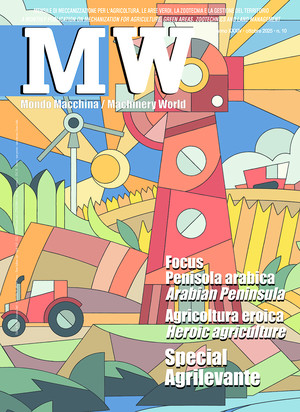
Energy Salon, under the aegis of bioeconomy
The 2016 edition of EIMA not only provided an exposition of technologies, but also a rich program of both informational and divulgative initiatives, which partly involved young students. The framework in which are placed the activities linked with energy from agricultural sources is that of bioeconomy, with agriculture as its main character
The balance of the Energy section, included in the recent EIMA International Salon, and coordinated by ITABIA, is definetely positive, not only for its technical contents and dynamic shows, but also for the participation of visitors in the many activities scheduled. The biomass issue (a precious resource with multiple uses) was developed in detail, by providing a description of the noticeable contribution it may give to the process of decarbonization of the economy towards an increasingly sustainable production process. In the days EIMA was taking place, in Marrakech was held (November 7-18, 2016), the 22nd edition of the Conference on climatic change, planned by the Convention of the United Nations to address the key points of the 2015 Paris Agreement. While in France the objective of COP21 was to define “what to do” in order to reduce the increase of global temperature, in Morocco the topic was “how to do it”.
Unfortunately, the implementation of an adequate and widely shared strategy (with 196 Countries involved), will require time and a commitment difficult to apply, given the urgency of the situation. However, in COP22’s final statements, are contained references that may raise hopes, such as the following declaration: “Indeed, this year, we have seen extraordinary momentum on climate change worldwide, and in many multilateral fora. This momentum is irreversible – it is being driven not only by governments, but by science, business and global action of all types at all levels”. Within this frame, Eima Energy wanted to emphasize the importance of an effective involvement of various subjects for the accomplishment of such an ambitious and crucial objective. The main effort was to design initiatives that were both divulgative and technical, by which enhancing the dialogue among the world of research, industry, professional associations, agricultural operators and students. And especially to the students, who represent the future of our country, was addressed a workshop dedicated to bioeconomy, during which were displayed some promising supply chains for the use of biomass. The workshop saw the enthusiastic participation of the Technical School of Montani di Fermo, represented by the students and teachers of three classes from the agrarian, agro food and agroindustrial (Production and Processing) lines. These students had the opportunity to learn that – besides the use for energy purposes – biomass represents an excellent source for many industrial sectors, that today are involved in a sustainable production cycle within a circular economy. The topics discussed regarded in particular natural products with a low environmental impact in the field of nutraceutics, cosmetics, detergents, packaging, active molecules, textile fibres, green building etc. The divulgative intent of the reports made available the many scientific, technical and commercial information to the students, whose level of attention and curiosity was constantly kept high. This initiative, widely appreciated by the teachers of the Istituto Montani, was also able to satisfy the speakers involved (from ITABIA, Chimica Verbe Bionet, CREA CIN, Federcanapa and Officina Naturae), who could promote a moment of reflection on the multifunctionality of farms in a sustainable perspective, by displaying innovative fields of application and good practices. In EIMA Energy’s program of workshops were also included further opportunities for in-depth exploration on bioenergy supply chains. In particular, the biogas supply chain was addressed, with regard to the new technological frontiers open by scientific research for a larger use of residues. Today, the technology for biogas production is well known and developed, and has contributed to the implementation of a large number of plants widespread in the national territory, especially in the livestock sector. The economic sustainability of these plants is though linked to the existing incentives for the production of renewable energy and methane. The future development of the sector will depend on: 1) enlarging the range of raw materials used, especially of residual biomass with a high percentage of cellulose, which are widely available and cheap; 2) the overall improvement of the process, with regard to biogas production and – with relation to biomethane – the need to increase significantly the content of the methane itself. This workshop allowed to spread among an audience of professional operators, the results of some research activities carried out at the ENEA laboratories on these issues, and to discuss their perspectives, such as trasfer and application of technologies to industry. All initiatives were covered by interviews, broadcast of live events, press-releases and online publication of the speeches held at the workshops. This attention to communication and publication of good practices within the sector of bioeconomy in Italy and particularly of bioenergy, highlights the effort and earnestness adopted by EIMA International, that has been promoting for many years a sector of strategic importance. After all, biomass valorization is able to give an extremely important contribution to contrasting climatic change. This is not only because products and energy from fossil sources are being replaced, but also because carbon is being stocked in well managed lands and forests. As Gianni Silvestrini – Kyoto Club’s scientific director – declared: “It is possible that in the following years an economic value will be given to carbon stocked in cultivated lands, as it happened for forests. In this way, farmers will have three types of sources available: land products, energy production, and lastly the economic value of carbon stocked in soil”.








